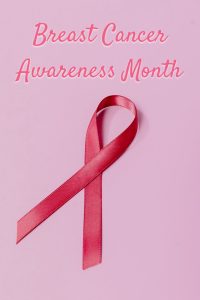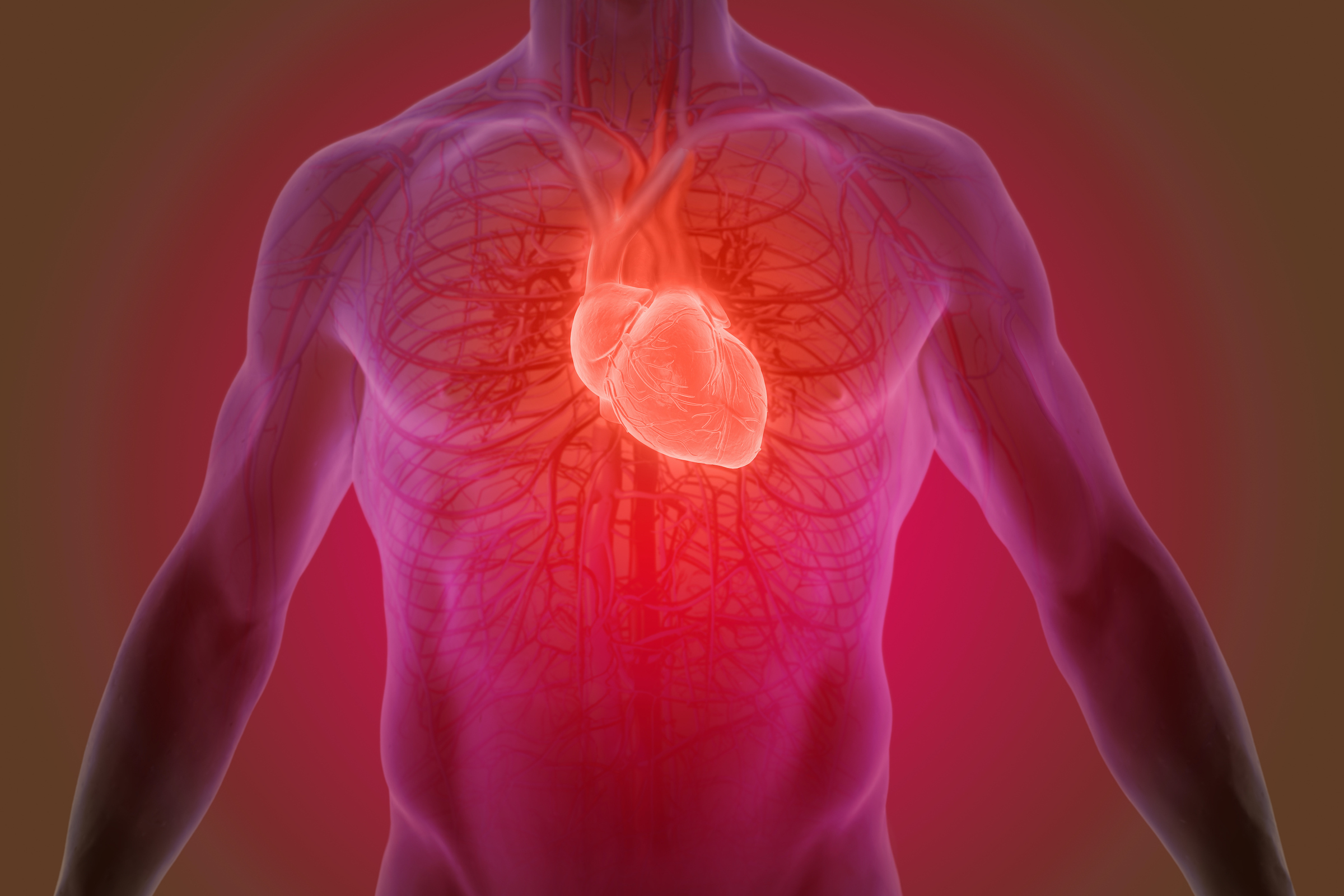
Health & Wellness 2024
We wear pink in October!
Breast cancer screenings can help find breast cancer early, when it is easier to treat. The US Preventive Services Task Force recommends that women who are 40 to 74 years old and are at average risk for breast cancer get a mammogram every 2 years. Having mammograms regularly can lower the risk of dying from breast cancer.
What is it?
A breast is made up of three main parts: lobules, ducts, and connective tissue. The lobules are the glands that produce milk. The ducts are tubes that carry milk to the nipple. The connective tissue (which consists of fibrous and fatty tissue) surrounds and holds everything together.
Breast cancer is a disease in which cells in the breast grow out of control. There are different kinds of breast cancer. The kind of breast cancer depends on which cells in the breast turn into cancer.
Most breast cancers begin in the ducts or lobules. Breast cancer can spread outside the breast through blood vessels and lymph vessels. When breast cancer spreads to other parts of the body, it is said to have metastasized.
Different Types
The most common kinds of breast cancer are:
Invasive ductal carcinoma. The cancer cells begin in the ducts and then grow outside the ducts into other parts of the breast tissue. Invasive cancer cells can also spread, or metastasize, to other parts of the body.
Invasive lobular carcinoma. Cancer cells begin in the lobules and then spread from the lobules to the breast tissues that are close by. These invasive cancer cells can also spread to other parts of the body.
There are several other less common kinds of breast cancer, such as Paget’s disease, medullary, mucinous, and inflammatory breast cancer.
Ductal carcinoma in situ (DCIS) is a breast disease that may lead to invasive breast cancer. The cancer cells are only in the lining of the ducts and have not spread to other tissues in the breast.
Dense Breasts
A mammogram shows how dense your breasts are. When you get the results of your mammogram, you may also be told if your breasts have low or high density. Women with dense breasts have a higher risk of getting breast cancer.
Parts of the Breast
A woman’s breast has three kinds of tissue:
Fibrous tissue holds the breast tissue in place.
Glandular tissue is the part of the breast that makes milk, called the lobes. The tubes that carry milk to the nipple are called ducts. Together, fibrous and glandular tissue are called fibro glandular tissue.
Fatty tissue fills the space between the fibrous tissue, lobes, and ducts. It gives the breasts their size and shape.
What is Breast Density?
Breast density reflects the amount of fibrous and glandular tissue in a woman’s breasts compared with the amount of fatty tissue in the breasts, as seen on a mammogram.
On a mammography report, breast density is assigned to one of the following four categories:
- The breasts are almost entirely fatty (about 10% of women).
- A few areas of dense tissue are scattered through the breasts (about 40% of women).
- The breasts are evenly dense throughout (about 40% of women). This may be called “heterogeneously dense” on the mammography report.
- The breasts are extremely dense (about 10% of women).
About half of women who are 40 years old or older have dense breasts.
Why Breast Density is Important
- Breast Cancer Risk: Women with dense breasts have a higher chance of getting breast cancer. The denser your breasts are, the higher your risk. Scientists don’t know for sure why this is true. Breast cancer patients who have dense breasts are not more likely to die from breast cancer than patients with non-dense (fatty) breasts.
- Mammograms: Dense tissue can hide cancers. Fibrous and glandular tissue looks white on a mammogram. So does a possible tumor. Because it’s hard to tell the difference between a tumor and dense breast tissue on a mammogram, a small tumor may be missed.
Women Who Are More Likely to Have Dense Breasts
The density of your breasts can change over time. Generally, you’re more likely to have dense breasts if you:
- Are younger.
- Are pregnant or breastfeeding.
- Are taking hormone replacement therapy.
- Have a lower body weight.
Your Next Steps
Talk to your doctor about your personal risk of getting breast cancer. Dense breasts are just one of several risk factors for breast cancer. Your doctor will also think about other factors, like your age and family history of cancer.
Different tests may be able to find some cancers that are missed on a mammogram. But these tests are more likely to have a false positive result (the test is reported as abnormal, but you really don’t have cancer). False positive test results often lead to unnecessary tests, like a biopsy. Also, you may have to pay for these tests.
Your doctor may suggest one of these tests:
- Breast ultrasound. A machine that uses sound waves to make pictures, called sonograms, of areas inside the breast.
- Breast magnetic resonance imaging (MRI). A kind of body scan that uses a magnet linked to a computer. The MRI scan makes detailed pictures of areas inside the breast.
Talk with your doctor about how often you should be screened for breast cancer, and which tests your doctor recommends.
Symptoms of Breast Cancer
Different people have different symptoms of breast cancer. Some people do not have any signs or symptoms at all.
Some warning signs of breast cancer are:
- New lump in the breast or underarm (armpit).
- Thickening or swelling of part of the breast.
- Irritation or dimpling of breast skin.
- Redness or flaky skin in the nipple area or the breast.
- Pulling in of the nipple or pain in the nipple area.
- Nipple discharge other than breast milk, including blood.
- Any change in the size or the shape of the breast.
- Pain in any area of the breast.
Keep in mind that these symptoms can happen with other conditions that are not cancer.
If you have any signs or symptoms, be sure to see your doctor right away.
What is a Normal Breast?
No breast is typical. What is normal for you may not be normal for another woman. Most women say their breasts feel lumpy or uneven. The way your breasts look and feel can be affected by having your period, having children, losing or gaining weight, and taking certain medications. Breasts also tend to change as you age. For more information, see the National Cancer Institute’s Breast Changes and Conditions.
What do lumps in my breast mean?
Many conditions can cause lumps in the breast, including cancer. But most breast lumps are caused by other medical conditions. Two common causes of breast lumps are fibrocystic breast condition and cysts. Fibrocystic condition causes noncancerous changes in the breast that can make them lumpy, tender, and sore. Cysts are small fluid-filled sacs that can develop in the breast.
Reducing Your Risk of Breast Cancer
Many factors over the course of a lifetime can influence your breast cancer risk. You can help lower your risk of breast cancer by taking care of your health. Staying healthy throughout your life can lower your risk of developing cancer and it can help improve your chances of surviving cancer if it occurs.
Transthyretin Amyloid Cardiomyopathy (ATTR-CM)
What is transthyretin amyloid cardiomyopathy?
Transthyretin (trans-thy-re-tin) amyloid cardiomyopathy (ATTR-CM) is an underdiagnosed and potentially fatal disease of the heart muscle. In ATTR-CM, a protein called transthyretin that normally circulates in the bloodstream becomes misshapen and builds up in the heart, nerves and other organs.
When these amyloid deposits build up in the heart, the walls can become stiff, making the left ventricle unable to properly relax and fill with blood. This is called cardiomyopathy. As the condition progresses, the heart can become unable to adequately squeeze to pump blood out of the heart, ultimately leading to heart failure. There are two types of ATTR-CM ‒ hereditary ATTR-CM and wild-type ATTR-CM.
Hereditary ATTR-CM
In hereditary ATTR-CM, which can run in families, there’s a variant in the transthyretin gene, which results in amyloid deposits in the heart, nerves and sometimes the kidneys and other organs. Symptoms may start as early as 30, although most present later in life.
Hereditary ATTR-CM is more common in localized parts of Portugal, Brazil, Sweden and Japan; however, there are a number of variants in different parts of the world. Some variants are more common in people of Irish ancestry while others are common among people of African descent.
Different variants may progress in a different way and involve different organs. The most common variant in the United States occurs in 3-4% of all African Americans.
Genetic testing may provide important information to developing a treatment plan.
Wild-type ATTR-CM
In the wild-type ATTR-CM, there is no variant in the transthyretin gene. Wild-type ATTR-CM doesn’t run in families. It most commonly affects the heart and can also cause carpal tunnel syndrome and pain and numbness in the hands and feet, called peripheral neuropathy. Recent data suggests lumbar spine involvement and forearm tendon rupture may precede cardiac involvement. The disease most often occurs in elderly men.
What are the risk factors? 
Risk factors for hereditary ATTR-CM include:
- A family member with ATTR-CM or heart failure
- Older adults
- Gender (patients are primarily male)
- Race – African American
Risk factors for wild-type ATTR-CM include:
- Older adults
- Gender (patients are primarily male)
What are the symptoms?
Symptoms of ATTR-CM can vary or be subtle, and the condition is often misdiagnosed. In its early stages, it may mimic the symptoms of other conditions, such as heart failure related to high blood pressure, or hypertension, and enlargement and thickening of the heart, or hypertrophic cardiomyopathy. Some people may have no symptoms, while others may progress to end-stage heart failure. The symptoms of wild-type ATTR-CM are similar but may be mild and remain undiagnosed but follow the same pattern.
ATTR-CM symptoms are like those associated with heart failure including shortness of breath at rest or with minimal exertion, lower extremity swelling and chest congestion.
Other symptoms usually occur after the shortness of breath is already there, including:
- Coughing or wheezing, especially when lying down
- Swelling in the feet, ankles and legs
- Bloating in the abdomen
- Confusion or trouble thinking
- Increased heart rate
- Palpitations or abnormal heart rhythms
Additional symptoms for ATTR-CM may include:
- Numbness or tingling in the hands and feet
- History of spinal stenosis
- Carpal tunnel syndrome
How is it diagnosed?
ATTR-CM may be suspected because of typical symptoms and the results of a routine cardiac test — an electrocardiogram or echocardiogram. Once suspected, more specialized tests are needed to confirm the diagnosis. These could include:
- Imaging studies of the heart, most commonly a cardiac MRI and/or a nuclear medicine scan of the heart
- A tissue biopsy of an affected organ
- Genetic testing
How can ATTR-CM be treated?
There are several promising new therapies for ATTR-CM on the horizon or available, so it is important to talk to your health care professionals about treatment options.
With ATTR-CM, health care professionals focus on easing the heart failure symptoms and slowing or stopping the amyloid deposits. Medications are approved for hereditary transthyretin amyloidosis to treat the neuropathy that may be affecting the nerves and causing pain in hands and feet.
In cases of advanced heart failure, heart transplantation may be an option. Because the abnormal transthyretin protein is produced by the liver, some people may require both heart and liver transplantation.
Talk with your health care professionals
Awareness of ATTR-CM among health care teams is low. In fact, it’s often misdiagnosed as hypertensive heart failure and may already be advanced by the time clinical symptoms are seen and the person receives a diagnosis.
If you are living with heart failure and have additional unresolved or seemingly unrelated symptoms, speak to your health care professional about your symptoms and treatment options. Starting that conversation could be a lifesaver.
Tell your health care professional about any shortness of breath and ask for a diagnostic testing and treatment plan. If the diagnostic tests don’t provide an answer, or if the treatment fails to improve your symptoms, talk with your health care professional about next steps. It’s important not to give up until the tests reveal a diagnosis and the treatment relieves your symptoms.
If you do have ATTR-CM, genetic testing may offer important information to your health care professional to develop a treatment plan.
Sober October

Elective sobriety, the conscious choice to abstain from alcohol, has become popular among people looking for ways to live a healthier lifestyle. Dry January, Sober October, and similar challenges that include foregoing alcohol are popping up on social media feeds around the globe.
Many health organizations consider drinking in moderation to be up to 1 drink per day for women and up to 2 drinks per day for men – a drink being one 5-oz glass of wine, 1 ½-oz shot of spirits, or 12-oz serving of beer. Even the Mediterranean diet, considered to be among the healthiest eating patterns, allows for the occasional glass of wine with meals.
 But some experts disagree with including alcohol as part of a healthy lifestyle, citing that any amount poses a danger to health. Alcohol consumption is closely linked to other unhealthy behaviors like smoking, unhealthy food choices, physical inactivity, and poor sleep. Regular consumption of alcohol can also lead to other health problems like liver failure, heart disease, and cancer.
But some experts disagree with including alcohol as part of a healthy lifestyle, citing that any amount poses a danger to health. Alcohol consumption is closely linked to other unhealthy behaviors like smoking, unhealthy food choices, physical inactivity, and poor sleep. Regular consumption of alcohol can also lead to other health problems like liver failure, heart disease, and cancer.
Nevertheless, the sober-curious crowd is growing. Mocktails, kombucha, and other non-alcoholic beverages are making their way to local restaurants and bars to accommodate sober lifestyles.
Temporary temperance may or may not lead to permanent abstinence from alcohol, but it is certainly a worthwhile act of self-care to explore. Changing your daily habits, even in small ways, can have a lasting, positive effect on the quality of your life.
If someone you know is exploring a sober lifestyle, here is how you can help support them:
• Do not offer them an alcoholic drink
• Do not ask them why they are not drinking
• Provide non-alcoholic beverage options at gatherings
• Ask how you can help support them
If you are concerned that you may be drinking too much and elective sobriety has not been successful, call 1-800-662-HELP (4357) to get additional support.
It is free, confidential, and open 24/7.
Healthy Coping Strategies for Life’s Unexpected Changes

Life does not always play out the way we thought it would, but how we respond in these transitional moments matters when it comes to our health.
Coping is the active process of managing stressful situations. Similarly, resilience is how we adapt to change. Coping and resilience go hand in hand, and together these skills can help you move through tough times more easily.
Unhealthy coping strategies include emotional eating, misuse of alcohol or other substances, and over spending, also known as “retail therapy.” Unfortunately, these often lead to even more problems and stress.
By choosing healthier coping mechanisms, you can move forward feeling calm and empowered, even when life’s heavy moments arrive without notice.
Establishing a self-care routine can make it easier to manage difficult times. Here are some self-care strategies to consider when you are facing a life change:
• Move your body. Physical activity can help defuse emotional energy and relieve stress.
• Cry. Crying is a natural, healthy outlet for strong emotions.
• Look for creative solutions. Make a list of all the possible ways you could manage the situation. Then
choose one and take action to move forward.
• Create distance. If possible, distance yourself from the source of stress, even if you can only take short breaks. Your body needs time to recover from physical and emotional stress.
• Prioritize sleep. Getting enough restful sleep can help you process disappointments and find solutions.
• Ask for help. Ask a trusted friend for support when you are struggling. Remember that seeking help when you are not able to manage your situation alone is a sign of strength.
Even in life’s most challenging moments, there is always something to look forward to. How you manage stressful situations can directly impact your health. Learning healthy coping strategies can help you build resilience to move through life’s unexpected changes more easily.

Chicken Fried Deer Steak
:max_bytes(150000):strip_icc()/131713-fried-venison-backstrap-3X4-0452-9c9cd6929bf74c0c944660bb3940c7a2.jpg)
Ingredients:
| Cubed Venison Steaks | All Purpose Flour | Buttermilk |
| Salt & Pepper |
Cayenne Pepper |
Paprika |
| Seasoned Salt |
Salted Butter |
Canola or Vegetable & Olive Oil |
You will need a tenderizing meat mallet and a cast iron skillet.
Directions:
»Lay the steaks flat between 2 sheets of plastic wrap. Using a tenderizing meat mallet, pound the steaks to ¼-inch thickness. (Be careful not to tear the meat.)
»Place deer steaks in a container of buttermilk and marinate in the refrigerator overnight. If you’re short on time, 2 hours should do the trick.
»Whisk together flour, seasoned salt, black pepper, paprika, salt, and cayenne pepper in a medium bowl or small pan. Drizzle about 1 tablespoon of buttermilk into the flour mixture while whisking, until tiny clumps start to form.
»Take steaks out of buttermilk one by one, allowing excess buttermilk to drip off. Coat both sides of the steaks in the seasoned flour and place on a large baking sheet. Refrigerate for 15 minutes. (This helps the batter stick to the steaks better while frying.)
»Heat canola or vegetable oil in a deep heavy skillet over medium heat. Add olive oil (for flavor) and butter (for browning). When butter has melted and oil has reached 325°F, you’re ready to fry!
»Fry 2 to 3 steaks at a time for 2-3 minutes on the first side, until blood starts to surface. Flip over and cook for 1-2 minutes, until golden brown and internal temperature reaches 165°F. Place fried steaks on a plate lined with paper towels to drain.
»Save your pan drippings to make gravy to drizzle over your deer steaks. Serve and enjoy!



